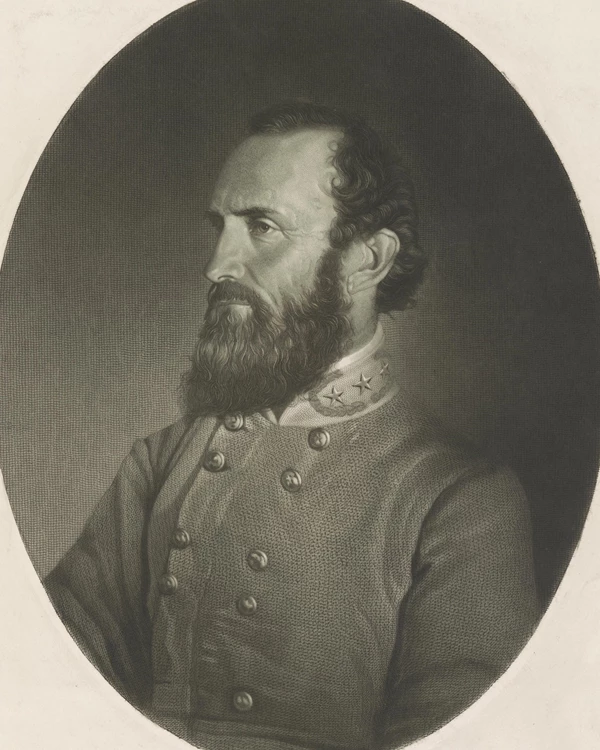Last updated: February 21, 2023
Person
Thomas J. "Stonewall" Jackson

Library of Congress
"Stonewall" Jackson went from being an orphan to one of the most valued generals in the Confederate Army.
He was born Thomas Jonathan Jackson on January 21, 1824, in Clarksburg, West Virginia. Self-educated, Jackson went to West Point Military Academy and graduated 17th in his class. As a US Army officer he fought in the Mexican War. He had some quiet years after that, teaching military tactics and physical science at the Virginia Military Institute. He spent summers enjoying art and culture.
Then in 1861, the Civil War started, and Jackson led troops to battle for the Confederacy. He got his nickname at the Battle of Bull Run in Virginia. During the gunfire and confusion of the battle, Confederate Gen. Barnard E. Bee said, "There is Jackson standing like a stone wall." The soldiers under his command came to admire his stubborn courage and started calling him "Stonewall" Jackson. As a general, he fought in many battles, until he was wounded by friendly fire at the Battle of Chancellorsville in Virginia in 1863 and died 8 days later from pneumonia.
Shenandoah Valley
In spring of 1862, Jackson unleashed a vigorous offensive that diverted thousands of Federal troops from their massive advance against the Confederate capital at Richmond.
With US Gen. George B. McClellan advancing on Richmond with 100,000 soldiers, Jackson had orders to cause a strategic distraction in the Shenandoah Valley. Using aggressive tactics and knowledge of the Valley's terrain, Jackson fought and beat several Federal commanders up and down the Valley from late March to early June. The Federals' retreat from Shenandoah Valley let Jackson's army join Gen. Robert E. Lee's besieged army near the Confederate capital at Richmond.
Peninsula to Maryland
Jackson often played the role of the audacious "hammer" of the army of Northern Virginia, taking quick and assertive offensive action. His roles in the Northern Virginia Campaign of August 1862, however, were an interesting blend of hammer (offensive) and anvil (defensive). Sent north to disrupt US Gen. John Pope's oppressive treatment of the people of Northern Virginia, Jackson successfully executed a sweeping flanking maneuver that placed his command in the rear of Pope's Army of Virginia. From this position he successfully captured the Federal army depot and all of the supplies at Manassas Junction before taking up a defensive position and effectively inviting Pope to assault him.
Pope obliged and for two days (August 28-29), Pope pounded Jackson as Longstreet and the remainder of the army marched north to reach the battlefield. Jackson held out despite delays in getting Longstreet's troops into action, even when his men were reduced to hurling rocks when they ran out of ammunition. This allowed for Longstreet to launch "the largest, simultaneous mass assault of the war" on August 30, sending more than 28,000 men into the left flank of the Union army.
When Lee decided to cross the Potomac and invade the North in the Maryland Campaign, he had intended to push toward Baltimore, Washington, or Pennsylvania, but became concerned about the Union presence in and near Harpers Ferry. In Special Orders 191 Lee sent Jackson to capture Harpers Ferry, which he accomplished on September 15. Jackson then pushed his men to join the rest of the army at Sharpsburg, Maryland.
Jackson arrived in time to bear the brunt of the Federal advances on the northern end of the battlefield in the morning phase of the Battle of Antietam on September 17. Just as it looked like the battle would be lost when Burnside's men began to turn the right of the Confederate line, A.P. Hill, leading the last elements of Jackson's Corps, arrived on the field from Harpers Ferry and stopped the Federal Advance.
Following the battle Jackson was promoted to Lieutenant General and his command redesignated as the Second Corps on October 10.
